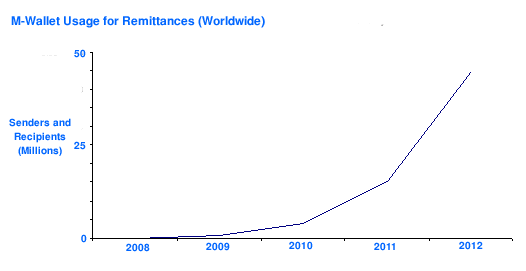The Would-Be Disruptors: New Technologies in the Remittance Space
Abstract
Remittances represent a growing market: 150 million people regularly send remittances to relatives in their native countries. By 2050, the number of immigrants worldwide is expected to increase to 280 million, leading to greater remittance volumes and transactions.
One of the most profound impacts of globalization on individual consumers has been the explosive growth of international remittances around the globe. In 2006, formal and informal remittances were estimated to be around $450 billion. Largely dominated by money transfer operators, the remittance market has attracted an ever-growing number of new players, replete with new technologies including mobile, card-to-card, International ACH, SWIFT remittances, self-service kiosks, cross-border bill pay, and mobile prepaid funds conversion.
A new Celent report, , examines the application of technology that holds the promise of making cross-border remittances less expensive, quicker, more convenient, and more secure than traditional low-tech remittance models. But how successful and how disruptive will these technologies be? The current dominant cash-to-cash model is deeply entrenched and accounts for close to 90% of the remittance market, thus presenting a high hurdle for new technologies to clear.
There is only one technology with truly disruptive qualities: mobile account-based solutions. With over 3 billion subscribers worldwide, mobile phones and their technology provide remittance recipients with an untethered electronic payments infrastructure where none has historically existed. With this infrastructure in place, remittance recipients not only receive funds at any time and any place, they can conduct cash-out, bill pay, P2P, mobile phone top-up, and proximity payments in a similar manner. Importantly, the use of mobile-based accounts to house remittances constitutes a gateway product to the formal financial sector, opening the possibility for savings, interest, and microcredit.

"The irony is that mobile remittances won't disrupt the major money transfer operators (MTOs), such as Western Union or Moneygram," says Red Gillen, senior analyst with Celent's banking group and author of the report. "It will be the smaller MTOs and MTO agents that will be disrupted as consumers migrate toward sophisticated solutions that only bigger players can provide and that bypass the agents."
This report highlights some of the main technologies in the remittance space and provides an analysis of how they match up against incumbent models and each other. The report contains 70 pages, 23 figures, and 10 tables. A table of contents is available online.
Members of Celent's Retail Banking research service can download the report electronically by clicking on the icon to the left. Non-members should contact info@celent.com for more information.
